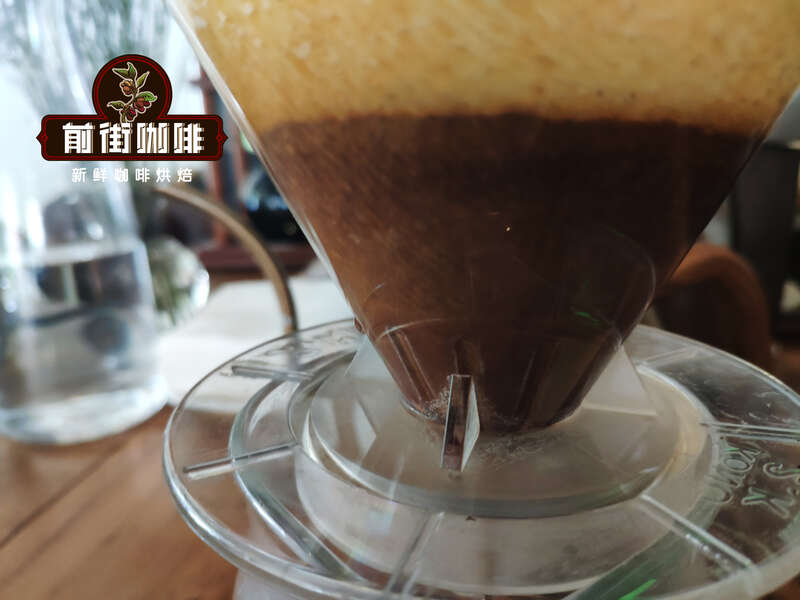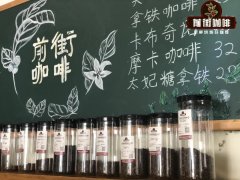What should I do with the coffee grounds after brewing coffee? There are four uses of coffee grounds you don't know.

We know that the coffee industry has an impact on the environment. From planting, processing to transportation and roasting, each step of the coffee supply chain consumes a certain amount of energy, so it has its own carbon footprint.
But what about the waste we produce when we drink coffee? Especially our waste coffee grounds? They are inevitable by-products of coffee consumption. Although many of us think it is safe to throw away land along with other organic waste, this is not the case. When the ground is finally to be buried, it will actually have a significant impact on the environment.
Here are the discarded used coffee grounds, the reasons why the garbage is not buried well, and how the average coffee drinker can reuse them.
According to SCA, the "golden ratio" of brewing coffee is 55 grams per liter. The 250 ml cup weighs less than 14 grams net. Although this may seem trivial, it consumes billions of cups of coffee every day.
Hector Nunes is a researcher and ambassador at BeKoffee, a company that makes products from waste coffee grounds. He told me that in Portugal, the average per capita consumption is 4.73 kg. Portugal has a population of just over 10 million, so it eventually exceeds 48000 metric tons a year.
Hector said that while some countries reuse their coffee waste, about 75% of them will eventually be landfills. Most of the remaining 25% is reused to make agricultural products such as fertilizers.
Melanie Gosling is the founder of Tipple&Tamper, an Italian station wagon in Queensland, Australia. She says Australia produces about 65000 tons of coffee waste every year. Most of them go to landfills. In addition, Melanie added, this does not take into account other forms of coffee waste-just leftovers from brewing coffee.
Most of the used coffee can be thrown into the dustbin without separation or treatment. After being thrown away, it will eventually be landfill. At this point, it will be at least three months before the coffee grounds can be decomposed in the anaerobic environment of the landfill.
"Coffee grounds contain soil and other compounds that make the soil more acidic," Hector said. In landfills, this produces acidic leachate (liquid), which may damage the surrounding soil.
Hector added: "in addition, the decomposition of coffee grounds in landfills also produces greenhouse gases."
These gases have a further impact on the environment and lead to climate change. "when coffee grounds are dumped into landfills, they produce methane, which is a greenhouse gas," Melanie said. It is well known that methane is more harmful than carbon dioxide. "
So, what are we going to do instead of throwing away the coffee? Well, most used coffee grounds are processed before their full value is extracted. According to bio-bean, the largest coffee grounds recycler in the UK, used dregs retain more than 1/3 of their volatile flavors and flavor compounds after brewing.
They also point out that coffee grounds also have a high calorific value. Although they are not edible, this means that they are a potential source of energy.
Bidou says coffee grounds burn "20% hotter and take longer" than dry wood fuel. They also have a lower carbon footprint than traditional fossil fuels.
Many organizations have noticed the "invisible" value of used coffee grounds. In addition to biological beans that collect and recycle coffee waste throughout the UK, there are many other organizations around the world that use coffee grounds for other purposes.

For example, UpCircle uses coffee waste and other natural ingredients to make skin care products. Another company, Kaffeeform, uses them to make sustainable coffee cups and saucers.
"used coffee grounds have high potential for organic composting, energy recovery and the production of new materials," Hector said.
"they have been used to produce biodiesel and particle heating. Soon, they will no longer be simple waste, but will be regarded as industrial raw materials. "
According to Hector, there is economic potential to use waste coffee grounds on a larger scale. However, the cost of organizing such programs will be difficult and will require the support of a large number of stakeholders, including coffee shops. In addition, even if the site is not redesigned, industrial-scale composting and recycling programmes are expensive and require significant investment in infrastructure.
A paper on obstacles and opportunities in the coffee industry published by the British Coffee Association (British Coffee Association) in 2018 said: "although [consumer waste] is much smaller than more commercial waste. Individual behavior is critical to generating long-term behavioral changes. "
Hector explained that although some countries began to collect coffee grounds for treatment and reuse, most countries did not have such a system. Therefore, in many countries, the only possible outcome is landfills, household reuse and composting.
So if it is difficult to obtain large-scale recycling or composting programs, what are the opportunities for households to reuse?
A brief Internet search will show dozens of different ways to reuse used coffee grounds at home, from using it as a natural exfoliating scrub to neutralizing the smell in the refrigerator.
However, one of the easiest and most practical ways to reuse coffee waste is to reuse it as plant fertilizer. Mandy and Gus Arnett own Green Bear Coffee, a coffee shop in New Zealand. "Household consumers should treat coffee by composting or pouring it into plants," they said. "
Mandy and Gus added that their coffee shop "provides customers with free coffee grounds" and that they can "bring their own containers and fill [their] cinder boxes with coffee."
Coffee grounds are rich in nitrogen and can naturally repel a variety of common garden pests. They can even be used to create "bar", "which" and "snail" cannot crawl. Over time, the used ground can also improve the quality of the garden soil and can be reused indefinitely without reducing benefits.
However, in order to get full value from used land, it should be composted for at least 100 days to reduce its caffeine, chlorogenic acid and tannin content. If you have a composting box for other used food, add floor to it.
Soils fertilized with compost coffee grounds are most suitable for plants that grow well in less acidic soils, such as lilies and blueberries. It should also be kept away from the pet, because it will be very dangerous if eaten.
Important Notice :
前街咖啡 FrontStreet Coffee has moved to new addredd:
FrontStreet Coffee Address: 315,Donghua East Road,GuangZhou
Tel:020 38364473
- Prev

Sun treatment of fine coffee beans in Baoshan area of Yunnan, China Yunnan small grain coffee brewing flavor
Professional coffee knowledge exchange more coffee bean information please follow the coffee workshop (Wechat official account cafe_style) Qianjie coffee rations bean series, Yunnan Province, China small grain coffee has been reflected in the eyes of many enthusiasts. Yunnan coffee beans used to give people the impression that the quality is not good and the flavor is not good. However, with the development of boutique coffee industry, Yunnan coffee beans have become a dark horse.
- Next

Is the bean cultivation period of coffee with different roasting degrees the same? Is carbon dioxide really bad for coffee?
In the process of roasting raw coffee beans into ripe beans, the sound like popcorn will occur with the development of the stage process, which is referred to as "first explosion" and "second explosion" for short. The causes of "first explosion" and "second explosion" are different: the first explosion is mainly caused by the pressure formed by the evaporation of water in coffee beans, while the second explosion is caused by the sugar degradation of coffee during caramelization.
Related
- Beginners will see the "Coffee pull flower" guide!
- What is the difference between ice blog purified milk and ordinary milk coffee?
- Why is the Philippines the largest producer of crops in Liberia?
- For coffee extraction, should the fine powder be retained?
- How does extracted espresso fill pressed powder? How much strength does it take to press the powder?
- How to make jasmine cold extract coffee? Is the jasmine + latte good?
- Will this little toy really make the coffee taste better? How does Lily Drip affect coffee extraction?
- Will the action of slapping the filter cup also affect coffee extraction?
- What's the difference between powder-to-water ratio and powder-to-liquid ratio?
- What is the Ethiopian local species? What does it have to do with Heirloom native species?

